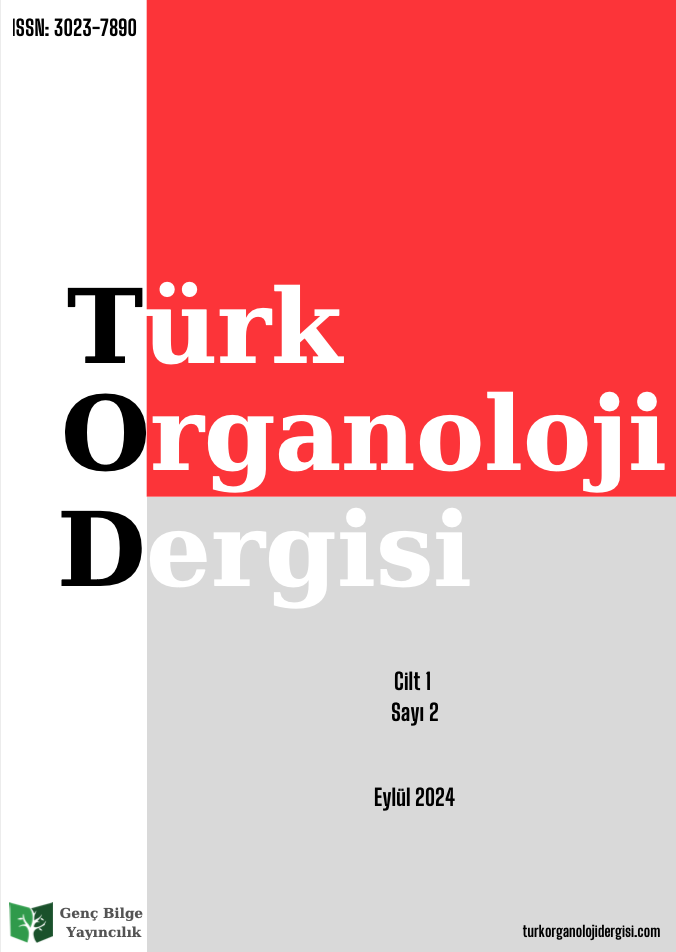Türk yaylı çalgılarından Kemane’ye analitik bir yaklaşım
DOI:
https://doi.org/10.5281/zenodo.13763394Anahtar Kelimeler:
kabak kemane- keman- kemaneÖz
Bu çalışmada, kemane ve kemanın Türk Halk Müziğinde kullanımı, çalgıların yapısal, tanısal benzerliklerinin karşılaştırılması ve dünya müziğindeki yeri organolojik bakış açısıyla incelenmekte ve çalgı yapımına, dünya müzikleri çeşitliliğine, farklı bir bakış kazandırılarak katkıları tartışılmaktadır. Bu çalışmanın amacı, kemanenin, ülkemizin farklı bölgelerinde ve dünya müziğinde kendini kanıtlamış olan keman ile benzerlikleri, yapısı gereği, bir dünya çalgısı niteliğine kavuşan batı müziği yaylı çalgısı olan kemanın aynı kulvarda ve özellikle Türk müziğini temsilen dünya çalgıları içerisinde yer almasının gerekliliğini ve sağlayacağı katkıları ortaya koymaktır. Araştırma, kemane ile kemanın yapısal ve işlevsel benzerliklerini inceleyerek, bu bilginin çalgı yapımcılığında ve icrasında nasıl daha etkili bir şekilde kullanılabileceğini tartışmaktadır. Bu araştırmada, kemane ile kemanın Türk halk müziği ve dünya müziklerinde kullanımı, çalgıların yapısal, tanısal ve ülkemizdeki farklı bölgelerde nasıl kullanıldığı nitel araştırma desenlerinden doküman analizi yöntemi ve alan-yazın taranarak betimsel anlatımla, vurgulanmaktadır. Bu bağlamda, kemane ve kemana organolojik bakış açılarının, bu adaş çalgı’ ların dünya çalgıları arasındaki eşit konuma entegre edilebilmesinin kemaneyi dünya çalgıları arasına girmesi gerekliliği sonucuna varılmıştır.
İndir
Yayınlanmış
Sayı
Bölüm
Lisans
Telif Hakkı (c) 2024 Türk Organoloji Dergisi

Bu çalışma Creative Commons Attribution-NonCommercial-NoDerivatives 4.0 International License ile lisanslanmıştır.




